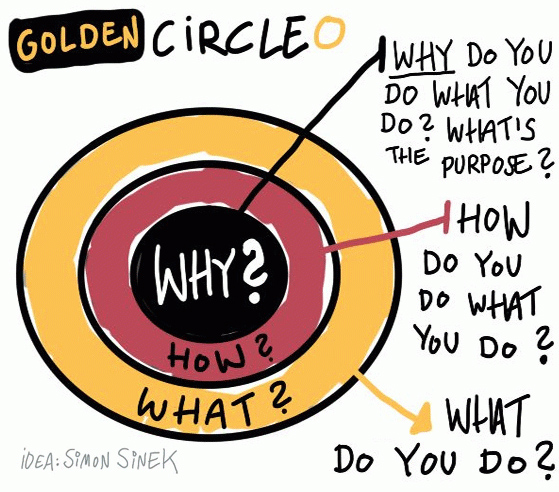
Once the hot new marketing strategy, content marketing has lost some of its luster. If you follow marketing newsletters and blogs, you’ve likely even seen the claim that content marketing is dead. Some say it’s no longer effective because consumers are oversaturated with content. Others feel that much of content marketing is too broad a strategy and it’s more effective to target those who can directly affect the behavior of others using influencer marketing. Still others think that the hoopla over content marketing is over and money is better spent on keyword purchases, social media, SEO, and other techniques to direct customers into the top of the marketing funnel.
Backblaze has had its own journey of discovery in figuring out which kind of marketing would help it grow from a small backup and cloud storage business to a serious competitor to Amazon, Google, and Microsoft. Backblaze’s story provides a useful example of how a company came to content marketing after rejecting or not finding success using a number of other marketing approaches. Content marketing worked for Backblaze in large part due to the culture of the company, which will reinforce our argument a little bit later that content marketing is a lot about your company culture. But first things first: what exactly is content marketing?
What is Content Marketing?
The goal of content marketing is to get customers to come to you by providing them with something they need or enjoy. Once you have their attention, you can promote (overtly or covertly) whatever it is you wish to sell to them.
Conceptually, content marketing is similar to running a movie theatre. The movie gets people into the theatre where they can be sold soft drinks, popcorn, Mike & Ikes and Raisinets, which is how theatre owners make most of their money, not from ticket sales. Now you know why movie theatre snacks and drinks are so expensive; they have to cover the cost of the loss leader, the movie itself, as well as give the owner some profit.

Movie theatre snack concession. Image from Wikipedia.
The Growth of Content Marketing
Marketing in recent years has increasingly become a game of metrics. Marketers today have access to a wealth of data about customer and marketing behavior and an ever-growing number of apps and tools to quantify and interpret that data. We have all this data because marketing has become largely an online game and it’s fairly easy to collect behavioral data when users interact with websites, emails, webinars, videos, and podcasts. Metrics existed before for conventional mail campaigns and the like, and focus groups provided some confirmation of what marketers guessed was true, but it was generally a matter of manually counting heads, responses, and sales. Now that we’re online, just adding snippets of code to websites, apps, and emails can provide a wealth of information about consumers’ behavior. Conversion, funnel, nurturing, and keyword ranking are in the daily lexicon of marketers who look to numbers to demystify consumer behavior and justify the funding of their programs.
Content marketing grew in importance alongside the rise in marketing metrics. While modern content marketing takes advantage of the immediacy and delivery vehicles of the internet, content marketing itself is as old as any marketing technique. It isn’t close to being the world’s oldest profession, but it does go back to the first attempts by humans to lure consumers to products and services with a better or more polished pitch than the next guy.
Benjamin Franklin used his annual Poor Richard’s Almanack as early as 1732 to promote his printing business and made sure readers knew where his printing shop was located. Farming equipment manufacturer John Deere put out the first issue of The Furrow in 1895. Today it has a circulation of 1.5 million in 40 countries and 12 different languages.


One might argue that long before these examples, stained glass windows in medieval cathedrals were another example of content marketing. They presented stories that entertained and educated and were an enticement to bring people to services.
Much later, the arrival of the internet and the web, and along with them, fast and easy content creation and easy consumer targeting, fueled the rapid growth of content marketing. We now have many more types of media beyond print suitable for content marketing, including social media, blogs, video, photos, podcasts and the like, which enabled content marketing to gain even more power and importance.
What’s the Problem with So Much Content Marketing?
If content marketing is so great, then why are we hearing so much about content marketing being dead? I believe that content marketing isn’t any more dead now than it was in Benjamin Franklin’s time, and people aren’t going to stop buying popcorn at movie theaters. The problem is that there is so much content marketing that doesn’t reach its potential because it is empty and meaningless.
Unfortunately, too many people who are running content marketing programs have the same mindset as the people running poor metrics marketing programs. They look at what’s worked in the past for themselves or others and assume that repeating an earlier campaign will be as successful as the original. The approach that’s deadly for content marketing is to think that since a little is good, more must be better, and more of the very same thing.
When content marketing isn’t working, it’s usually not the marketing vehicle that’s to blame, it’s the content itself. Hollywood produces some great and creative content that gets people into theaters, but it also produces a lot of formulaic, repetitive garbage that falls flat. If a content marketing campaign is just following a formula and counting on repeating a past success, no amount of obscure performance metric optimization is going to make the content itself any better. That applies just as much to marketing technology products as it does to marketing Hollywood movies.
The screenwriter William Goldman (Butch Cassidy and the Sundance Kid, All the President’s Men, Marathon Man, The Princess Bride) once famously said, “In Hollywood, no one knows anything.” He meant that no matter how much experience a producer or studio might have, it’s hard to predict what’s going to resonate with an audience because what always resonates is what is fresh and authentic, which are the hardest qualities to judge in any content and eludes simple formulas. Movie remakes sometimes work, but more often they fail to capture something that audiences responded to in the original: a fresh concept, great performances by engaged actors, an inspired director, and a great script. Just reproducing the elements in a previous success doesn’t guarantee success. The experience in the new version has to capture the magic in the original that appealed to the audience.
A lot of content just dangles an attractive hook to entice content consumers to click, and that’s all it does. Anyone can post a cute animal video or a suggestive or revealing photo, but it doesn’t do anything to help your audience understand who you are or help solve their problems.
Unfortunately for media consumers, clickbait works in simply getting users to click, which is the reason it hasn’t disappeared. As long as people click on the enticing image, celebrity reference, or promised secret revelation, we’ll have to suffer with clickbait. Even worse, clickbait is often used to tip the scales of value from the reader, where it belongs, to the publisher. Many viral tests, quizzes and celebrity slideshows plant advertising cookies that benefit the publisher by increasing the cost and perceived value of advertising on their site, leaving the consumer feeling that they’ve been used, which of course is exactly what has happened.
Another, and I think more important reason that content marketing isn’t succeeding for many is not that it’s not interesting or even useful, but that the content isn’t connected in a meaningful way with the content publisher. Just posting memes, how-tos, thought pieces, and stories unrelated to who you are as a business, or not reflecting who your employees are and the values you hold as a company, doesn’t do anything to connect your visitors to you. Empty content is like empty calories in junk food; it doesn’t nourish and strengthen the relationship you should be building with your audience.
Is SEO the Enemy?
SEO is not the enemy, but focusing on only some superficial SEO tactics above other approaches is not going to create a long-term bond with your visitors. Keyword stuffing and optimization can damage the user experience if the user feels manipulated. Google might still bring people to your content as a result of these techniques, but it’s a hollow relationship that has no staying power. When you create quality content that your audience will like and will recommend to others, you produce backlinks and social signals what will improve your search rankings, which is the way to win in SEO.
Despite all the supposed secret formulas and tricks to get high search engine ranking, the real secret is that Google loves quality content and will reward it, so that’s the smart SEO strategy to follow.
What is Good Content Marketing?
Similar to coming up with an idea for the next movie blockbuster to get people into theaters, content marketing is about creating good and useful content that entertains, educates, creates interest, or is useful in some way. It works best when it is the kind of content that people want to share with others. The viral effect will compound the audience you earn. That’s why content marketing has really taken off in the age of social media. Word-of-mouth and good write-ups have always propelled good content, but they are nothing compared to the effect viral online sharing can have on a good blog post, video, photograph, meme or other content.
How do you create this great content? We’re going to cover three steps that will take you from ho-hum content marketing to good and possibly even great content marketing. If you follow these three steps, you’ll be ahead of 90 percent of the businesses out there that are trying to crack the how-to of content marketing.
First — Start with Why You Do What You Do
Simon Sinek in his book, Start with Why, and in his presentations, especially his TED Talk, How Great Leaders Inspire Action, argues that people don’t base their purchasing decisions primarily on what a company does, but on why they do it. This might be hard to envision for some products, like toothpaste or laundry detergent, but I think it does apply to every purchase we make, even if in some cases it’s to a small degree. For some things it’s much more apparent. People identify with iOS or Android, Ford or Chevy, Ducati or Suzuki, based on much more than practical considerations of price, effectiveness, and other qualities. People want to use products and services that bolster their image of who they are, or who they want to be. Some companies are great at using this desire (Apple, BMW, Nike, Sephora, Ikea, Whole Foods, REI) and have a distinct identity that is the foundation for every message they put out.


To communicate the why of your products and services, you can’t just put out generic content that works for anyone. You have to produce content that shows specifically who you are. The best content marketing is cultural. The content you deliver tells your audience what kind of company you are, what your values are, who are the people in the company, and why they work there and do the things they do. That means you must be authentic and transparent. That takes courage, and isn’t easy, which is why so few companies are good at it. It takes vision, leadership, and a constant reminder from company leaders of what you’re doing and why it matters.
Unfortunately, this is hard to maintain as companies grow. The organizations that have grown dramatically and yet successfully maintained the core company values have either had a charismatic leader who represented and reiterated the company’s values at every opportunity (Apple), or have built them into every communication, event, and presentation by the company, no matter who is delivering them (Salesforce).
If your company isn’t good at this, don’t despair. These skills can be learned, so if your company needs to get better at understanding and communicating the why of who they are, there’s still hope that with some effort, it can still happen.
Second — Put Yourself in Your Customers’ Shoes
You not only need to understand yourself and your company and present yourself authentically, you have to really understand your customer — really, really understand your customer. That takes time, research, and empathy to walk a mile in their shoes. You need to visit your customers, spend a day fielding support calls or working customer service, go places, do things, and ask questions that you’ve never asked. Are they well off with cash to burn, or do they count every penny? Do they live for themselves, their parents, their children, their community, their church, their livelihood? How could your company help them solve their problems or make their lives better?
The best marketers have imagination and empathy. They, like novelists, playwrights, and poets, are able to imagine what it would be like to live like someone else. Some marketing organizations formalize this function by having one person who is assigned to represent the customers and always advocate for their interests. This can help prevent falling into the mindset of thinking of the customer only as a source of revenue or problems that have to be solved.
One common marketing technique is to create a persona or personas that represent your ideal customer(s). What is their age, sex, and occupation? What are their interests, fears, and desires? Knowing these things will make sure that the customer is never just an unseen face or simply a potential revenue source, but instead is a real person whom you need to be close to and understand as much as possible.
Once you’ve made the commitment to understand your customers, you’re ready to help solve their problems.
Third — Focus on Solving Your Customers’ Problems
Once you have your authentic voice down and you really know who your customer is and how they think, the third thing you need to do is focus on providing useful content. Useful content for your customers is content that solves a real problem or helps them realize a dream they have. What’s causing them pain or what’s impeding them doing what they need or want to do? The customer may or may not know they have this pain. You might be creating a new need or desire for them by telling a story about how their life will be if they only had this thing, service, or experience. By speaking to the needs and aspirations of your customers, you’re helping them solve problems, but also forging a bond of trust and usefulness that will go forward in your relationship with them.
Mastering Blogging for Content Marketing
There are many ways to create and deliver content that is authentic and serves a need. Podcasts, Vlogs, events, publications, words, pictures, music, and videos all can be effective delivery vehicles for quality content. Let’s focus on one vehicle that can return exceptional results when done right, and that is blogging, which has worked well for Backblaze.
Backblaze didn’t just create a blog that then turned into an overnight success. Backblaze tried a number of marketing approaches that didn’t perform as the company hoped. The company wrote about these efforts on its blog, which is a major reason why the blog became a marketing success — it showed that the company was willing to talk about both its successes and its failures. You can read about some of these marketing adventures in this post, Vote For Your Favorite Backblaze Online Backup Billboard, And the Winner is…, and the post, How to Save Marketing Money by Being Nice. Forbes wrote about Backblaze’s marketing history in an article in 2013.
Backblaze billboard on Highway 101 in Silicon Valley
Backblaze decided early that it would be as transparent as possible in its business practices. That meant that if there were no good reason not to release information, the company should release it, and the blog became the place where the company made that information public. Backblaze’s CEO Gleb Budman wrote about this commitment to transparency, and the results from it, in a blog post in 2017, The Decision on Transparency. An early example of this transparency is a 2010 post in which Backblaze analyzed why a proposed acquisition of the company failed, Backblaze online backup almost acquired — Breaking down the breakup. Companies rarely write about acquisitions that fall through because they are afraid that they will be judged negatively. Most people understand that there are ups and downs in business, and they appreciate when a company isn’t afraid of being open about them. By being transparent about both your successes and your failures, you’re building trust with your customers that you won’t hide important information from them if and when it becomes necessary.
Content Consumers Love Useful Information That Others Don’t Provide
Backblaze’s blog really took off in 2015 when the company decided to publish the statistics it had collected on the failure rate of hard drives in its data centers, Reliability Data Set For 41,000 Hard Drives Now Open-source. While many cloud companies routinely collected this kind of data, including Amazon, Google, and Microsoft, none had ever made it public. It turned out that readers were tremendously hungry for data on how hard drives performed, and Backblaze’s blog readership subsequently increased by hundreds of thousands, even millions, of readers. Readers analyzed the drive failure data and debated which drives were the best for their own purposes. This was despite Backblaze’s disclaimer that how Backblaze used hard drives in its data centers didn’t really reflect how the drives would perform in other applications, including homes and businesses. Customers didn’t care. They were starved for the information and waited anxiously for the release of each new Drive Stats post.
It Turns Out That Blogging with Authenticity and Transparency is Rewarded
As Gilmore and Pine wrote in their book, Authenticity, “People increasingly see the world in terms of real and fake, and want to buy something real from someone genuine, not a fake from some phony.” How do you convince your customers that you’re real and genuine? The simple answer is to communicate honestly about who you are, which means sometimes telling them about your failures and mistakes and owning up to less than stellar performances by yourself or your company. Consider lifting the veil occasionally to reveal who you are. If you put the customer first, that shouldn’t be too hard even when you fall short. If your intentions are good, being transparent will almost always be rewarded with forgiveness and greater trust and loyalty from your customers.
Many companies created blogs thinking they had to because everyone else was and they started posting articles by their executives and product marketers going on about how great their products were. Then they were surprised when they got little traffic. These people didn’t get the message about how content should be used to help customers with their problems and build a relationship with them through authenticity and transparency.
If you have a blog, you could use that as a place to write about how you do business, the lessons you’ve learned, and yes, even the mistakes you’ve made. Don’t assume that all your company information needs to be protected. If at all possible, write about the tough issues and why you made the decisions you did. Your customers will respond because they don’t see that kind of frankness elsewhere and because they appreciate understanding the kind of company they’re paying for the product or service.
Don’t be afraid to write to a specific audience or group on your blog. You likely have multiple audiences for your blog, and some of them might be specialized with their own expertise, language, and interests. When you’re writing to an audience with specialized vocabulary or acronyms, don’t be afraid to use them. Other readers will recognize that the post is not for them and skip over it, or they’ll use it to learn something about an area new to them. If you try to make all your posts suitable for a homogeneous reader, you’ll end up with some readers leaving because you’re not speaking directly to them using their language. Strive to match the content, vocabulary, graphics, technical argot, and level of reading to the intended reader.
If the piece is aimed at a novice or general audience, definitely take the time to explain unfamiliar concepts and spell out abbreviations and acronyms that might not be familiar to the reader. However, if the piece is aimed at a professional audience, you should avoid doing that because the reader might think that the post isn’t aimed at professionals and they could dismiss the post and the blog thinking it’s not suitable for them.
The goal is to make each reader feel that the piece was written specifically for him or her.
Take Content Marketing That Is Just OK and Make It Great
Authenticity, honesty, frankness, and sincerity are all qualities that to some degree or other are present in the best content. Unfortunately, marketers have the reputation for producing content that’s at the opposite end of the spectrum. Comedian George Burns could have been parodying a modern marketing course when he wrote, “To be a fine actor, you’ve got to be honest. And if you can fake that, you’ve got it made.”
There’s a reason that the recommendation to be authentic sounds like advice you’d get from your mom or dad about how to behave on your first date. We all learn sooner or later that if someone doesn’t like you for who you are, there’s no amount of faking being someone else that will make them like you for more than just a little while.
Be yourself, say something that really means something to you, and tell a story that connects with your audience and gives them some value. Those intangibles are hard to measure in metrics, but, when done well, might earn you an honest response, some respect, and perhaps a repeat visit.






